biography, guidance notes, and critical essays
This complete critical guide to Jane Austen comes from a new series by Routledge which offers comprehensive but single-volume introductions to major English writers. They are aimed at students of literature, but are accessible to general readers who might like to deepen their understanding. The approach taken is quite straightforward. Part One is a potted biography of Austen, placing her life and work in a socio-historical context. This takes into account the role of women in the early nineteenth century; the position of a female author in the world of book publishing at the time; the social conventions surrounding women and marriage; and the sheer political fact that she was living at the time of the French revolution and war between Britain and France.
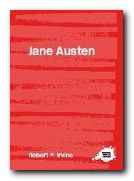 Part Two provides a synoptic view of Austen’s six great novels – from Northanger Abbey to Persuasion. The works are described in outline, and then their main themes illuminated. This is followed by pointers towards the main critical writings on these texts and issues.
Part Two provides a synoptic view of Austen’s six great novels – from Northanger Abbey to Persuasion. The works are described in outline, and then their main themes illuminated. This is followed by pointers towards the main critical writings on these texts and issues.
Part Three deals with criticism of Austen’s work. This is presented in chronological order – from contemporaries such as Walter Scott to critics of the present day, with the focus on feminist and gender criticism, Marxist, and psychoanalytic criticism. Some of the readings Irvine outlines will be quite provocative and surprising to many readers – particularly those dealing with such issues as slavery in Mansfield Park and both sexual and homosexual readings of Sense and Sensibility.
The book ends with a commendably thorough bibliography which covers biography, criticism in books and articles, plus pointers towards specialist Austen journals. There is also a separate chapter which deals with Austen on screen. This discusses the controversial issue of Austen’s work as it has been appropriated to project modern notions of English nationalism and the ‘heritage industry’.
This will be an excellent starting point for students who are new to Austen’s work – and a refresher course for those who would like to keep up to date with criticism. And it certainly is up to date – with references to publications only just over a year old at the time of publication.
© Roy Johnson 2005
Robert P. Irvine, The Complete Critical Guide to Jane Austen, Abingdon: Routledge, 2005, pp.190, ISBN 0415314356
More on literature
More on the novella
More on literary studies
More on short stories
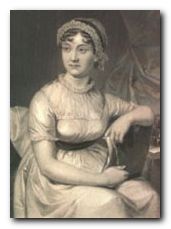 David Cecil, A Portrait of Jane Austen, London: Constable, 1978.
David Cecil, A Portrait of Jane Austen, London: Constable, 1978.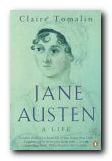 Jane Austen: a Life is a biography which traces Jane Austen’s progress through a difficult childhood, an unhappy love affair, her experiences as a poor relation and her decision to reject a marriage that would solve all her problems – except that of continuing as a writer. Both the woman and the novels are radically reassessed in this biography. Her life was superficially uneventful, but Claire Tomalin brings out the flesh and blood woman who lies behind the cool, ironic prose.
Jane Austen: a Life is a biography which traces Jane Austen’s progress through a difficult childhood, an unhappy love affair, her experiences as a poor relation and her decision to reject a marriage that would solve all her problems – except that of continuing as a writer. Both the woman and the novels are radically reassessed in this biography. Her life was superficially uneventful, but Claire Tomalin brings out the flesh and blood woman who lies behind the cool, ironic prose. The Complete Critical Guide to Jane Austen is a good introduction to Austen criticism and commentary. It includes a potted biography, an outline of the novels, and pointers towards the main critical writings – from Walter Scott to critics of the present day. It also includes a thorough bibliography which covers biography, criticism in books and articles, plus pointers towards specialist journals. It also has an interesting chapter discussing Austen on the screen. These guides are very popular.
The Complete Critical Guide to Jane Austen is a good introduction to Austen criticism and commentary. It includes a potted biography, an outline of the novels, and pointers towards the main critical writings – from Walter Scott to critics of the present day. It also includes a thorough bibliography which covers biography, criticism in books and articles, plus pointers towards specialist journals. It also has an interesting chapter discussing Austen on the screen. These guides are very popular. Pride and Prejudice
Pride and Prejudice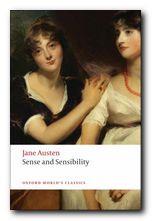 Sense and Sensibility
Sense and Sensibility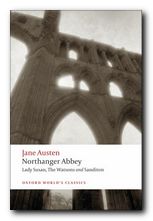 Northanger Abbey
Northanger Abbey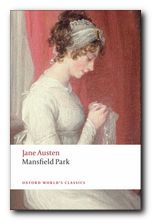 Mansfield Park
Mansfield Park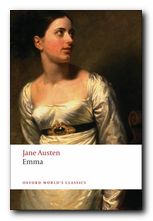 Emma
Emma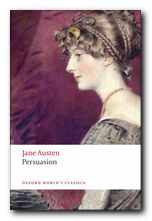 Persuasion
Persuasion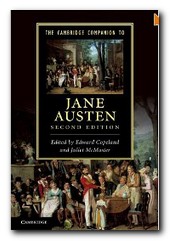
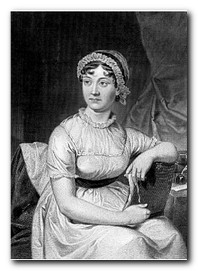
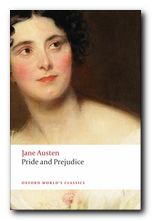

 Sense and Sensibility (1811) casts two young and marriageable sisters Elinor and Marianne Dashwood as representatives of ‘sense’ and ‘sensibility’ respectively. Elinor bears her social disappointments with dignity and restraint – and thereby gets her man. Marianne on the other hand is excitable and impetuous, following her lover to London – where she quickly becomes disillusioned with him. Recovering and gaining more ‘sense’, she then finally sees the good qualities in her old friend Colonel Brandon, who has been waiting in the wings and is now conveniently on hand to propose marriage.
Sense and Sensibility (1811) casts two young and marriageable sisters Elinor and Marianne Dashwood as representatives of ‘sense’ and ‘sensibility’ respectively. Elinor bears her social disappointments with dignity and restraint – and thereby gets her man. Marianne on the other hand is excitable and impetuous, following her lover to London – where she quickly becomes disillusioned with him. Recovering and gaining more ‘sense’, she then finally sees the good qualities in her old friend Colonel Brandon, who has been waiting in the wings and is now conveniently on hand to propose marriage. Northanger Abbey (1818) opens in the drawing rooms of Bath. The heroine is imaginative Catherine Morland who falls in love with Henry Tilney, a young clergyman. When he invites her to meet his family at the Abbey however, she sees nothing but Gothic melodrama at every turn – since they were very fashionable at the time. Her visions of medieval horror prove groundless of course. This is Jane Austen’s satirical critique of Romantic cliché and excess. But Catherine eventually learns to see the world in a realistic light – and gets her man in the end. This volume also contains the early short novels Lady Susan and The Watsons, as well as the unfinished Sanditon.
Northanger Abbey (1818) opens in the drawing rooms of Bath. The heroine is imaginative Catherine Morland who falls in love with Henry Tilney, a young clergyman. When he invites her to meet his family at the Abbey however, she sees nothing but Gothic melodrama at every turn – since they were very fashionable at the time. Her visions of medieval horror prove groundless of course. This is Jane Austen’s satirical critique of Romantic cliché and excess. But Catherine eventually learns to see the world in a realistic light – and gets her man in the end. This volume also contains the early short novels Lady Susan and The Watsons, as well as the unfinished Sanditon. Mansfield Park (1814) is more serious after the comedy of the earlier novels. Heroine Fanny Price is adopted into the family of her rich relatives. She is long-suffering and passive to a point which makes her almost unappealing – but her refusal to tolerate any drop in moral standards eventually teaches lessons to all concerned. (All that is except standout character Mrs Norris who is a sponging and interfering Aunt you will never forget.) The hero Edmund is dazzled by sexually attractive Mary Crawford – but in the nick of time sees the error of his ways and marries Fanny instead. Slow moving, but full of moral subtleties.
Mansfield Park (1814) is more serious after the comedy of the earlier novels. Heroine Fanny Price is adopted into the family of her rich relatives. She is long-suffering and passive to a point which makes her almost unappealing – but her refusal to tolerate any drop in moral standards eventually teaches lessons to all concerned. (All that is except standout character Mrs Norris who is a sponging and interfering Aunt you will never forget.) The hero Edmund is dazzled by sexually attractive Mary Crawford – but in the nick of time sees the error of his ways and marries Fanny instead. Slow moving, but full of moral subtleties. Emma (1816) Charming and wilful Emma Woodhouse amuses herself by dabbling in other people’s affairs, planning their lives the way she sees fit. Most of her match-making plots go badly awry, and moral confusion reigns until she abandons her self-delusion and wakes up to the fact that stern but honourable Mr Knightly is the right man for her after all. As usual, money and social class underpin everything. Some wonderful comic scenes, and a rakish character Frank Churchill who finally reveals his flaws by making the journey to London just to get his hair cut.
Emma (1816) Charming and wilful Emma Woodhouse amuses herself by dabbling in other people’s affairs, planning their lives the way she sees fit. Most of her match-making plots go badly awry, and moral confusion reigns until she abandons her self-delusion and wakes up to the fact that stern but honourable Mr Knightly is the right man for her after all. As usual, money and social class underpin everything. Some wonderful comic scenes, and a rakish character Frank Churchill who finally reveals his flaws by making the journey to London just to get his hair cut. Persuasion (1818) is the most mature of her novels, if one of the least exciting. Heroine Anne Elliott has been engaged to Captain Wentworth, but has broken off the engagement in deference to family and friends. Meeting him again eight years later, she goes against conventional wisdom and accepts his second proposal of marriage. Anne is a sensitive and thoughtful character, quite unlike some of the earlier heroines. Jane Austen wrote of her “She is almost too good for me”. There is a shift of location to Lyme Regis for this novel, which reveals for the first time a heroine acting from a deep sense of personal conviction, against the grain of conventional wisdom.
Persuasion (1818) is the most mature of her novels, if one of the least exciting. Heroine Anne Elliott has been engaged to Captain Wentworth, but has broken off the engagement in deference to family and friends. Meeting him again eight years later, she goes against conventional wisdom and accepts his second proposal of marriage. Anne is a sensitive and thoughtful character, quite unlike some of the earlier heroines. Jane Austen wrote of her “She is almost too good for me”. There is a shift of location to Lyme Regis for this novel, which reveals for the first time a heroine acting from a deep sense of personal conviction, against the grain of conventional wisdom.